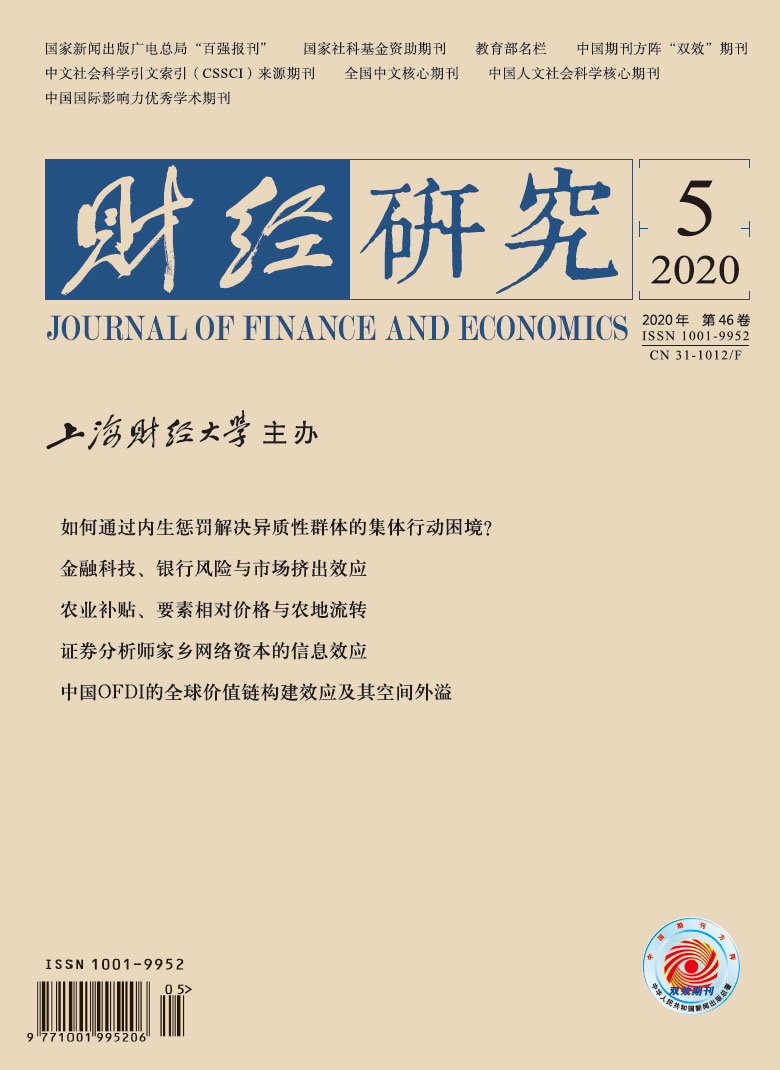China’s land supply system, household’s housing purchasing preference and new housing’s production function are totally different from those in Europe and the United States. As a starting point to study China’s real estate economy from a macro perspective, there is an urgent need to use China’s data to calibrate or estimate a new housing’s aggregate production function with more credible parameters. Therefore, based on a dynamic stochastic general equilibrium (DSGE) model with two production sectors, this paper attempts to do this work.
Because we do not pay attention to the short-term fluctuations of China’s macro economy and real estate economy, it is not necessary to establish a large and complex DSGE model that takes into account the monetary and credit financial sectors and various nominal frictions when calibrating or estimating these structural parameters. To this end, this paper follows a common practice of estimating the aggregate production function at home and abroad to construct a fundamental model that does not include these financial and nominal friction factors. The small-scale model in this paper mainly includes six sectors: new housing production, general product production, households, investment products, land resellers and governments.
The fundamental model’s estimation finds that in China’s new housing production costs, the shares of land, physical capital and labor are 23%, 67% and 10%, respectively. Obviously, this result is hugely different from Iacoviello and Stefano (2010) about the shares of capital, land and labor of the new housing production function in the United States at approximately 20%, 10% and 70%, respectively. Therefore, we cannot directly borrow the structural parameters in the new housing production function from those countries such as the United States and Europe. In comparison, in the new housing production costs of the first-tier cities such as Beijing and Shanghai, the land’s share is close to 30%, the physical capital’s is slightly over 50%, and the labor’s is 20%.
Because capital is basically free to flow in the domestic, the prices of land and labor in the first-tier cities such as Beijing and Shanghai are more expensive than in the other cities, it is reasonable to estimate that the shares of land and labor in the new housing production in the first-tier cities are higher. In addition, Chinese households’ preference parameter for real estate in the first-tier cities such as Beijing and Shanghai is about 1.09, which is significantly larger than the national average of about 0.84.
If the model’s setting is basically correct, there may be systematic deviations in the statistics of the Chinese real estate sector, and it is more severe in the national level than in the first-tier cities such as Beijing and Shanghai. The preliminary estimation results show that the sales of new commercial housing in the national level and the first-tier cities such as Beijing and Shanghai are systematically underreported by approximately 8% and 3%, respectively; the land purchasing fees are underreported by about 23% and 6%, respectively; the real estate development investment is overstated by approximately 28% and 23%, respectively.
Based on the simulation analysis of the fundamental model, this paper emphasizes that, for the current land supply, local governments should “implement a different policy for those different level cities”: for the third- and fourth-tier cities, they should properly reduce land supply to stabilize land and housing prices in the short-term; for the first- and second-tier cities, they should try to increase land supply to reduce land and housing’ prices in the long-term. On March 12, 2020, the State Council issued the “Decision on Authorization and Entrusted Land Approval Rights” to further deepen the reform of “simplifying administration and decentralization, combining decentralization and management, and optimizing services”, and gave provincial governments greater land autonomy. Obviously, for local governments, this is more conducive to “implement a different land supply policy for those different level cities”, which is demonstrated by this paper.
The research method’s contribution is that this paper provides a method for DSGE model’s parameter calibration and Bayesian structure estimation in the case of statistical systematic deviations. This fills the gaps in relevant literature at home and abroad, so it can also be used to study the macroeconomic issues under DSGE framework in the countries with poor statistical data.






 5758
5758  6817
6817

